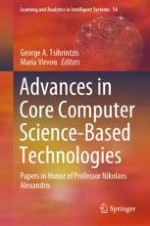This book introduces readers to some of the most significant advances in core computer science-based technologies. At the dawn of the 4th Industrial Revolution, the field of computer science-based technologies is growing continuously and rapidly, and is developing both in itself and in terms of its applications in many other disciplines. Written by leading experts and consisting of 18 chapters, the book is divided into seven parts: (1) Computer Science-based Technologies in Education, (2) Computer Science-based Technologies in Risk Assessment and Readiness, (3) Computer Science-based Technologies in IoT, Blockchains and Electronic Money, (4) Computer Science-based Technologies in Mobile Computing, (5) Computer Science-based Technologies in Scheduling and Transportation, (6) Computer Science-based Technologies in Medicine and Biology, and (7) Theoretical Advances in Computer Science with Significant Potential Applications in Technology.
Featuring an extensive list of bibliographic references at the end of each chapter to help readers probe further into the application areas of interest to them, this book is intended for professors, researchers, scientists, engineers and students in computer science-related disciplines. It is also useful for those from other disciplines wanting to become well versed in some of the latest computer science-based technologies.
